Nirajan Pokharel
Ultimate Guide to Amazon EC2: Everything You Need to Know
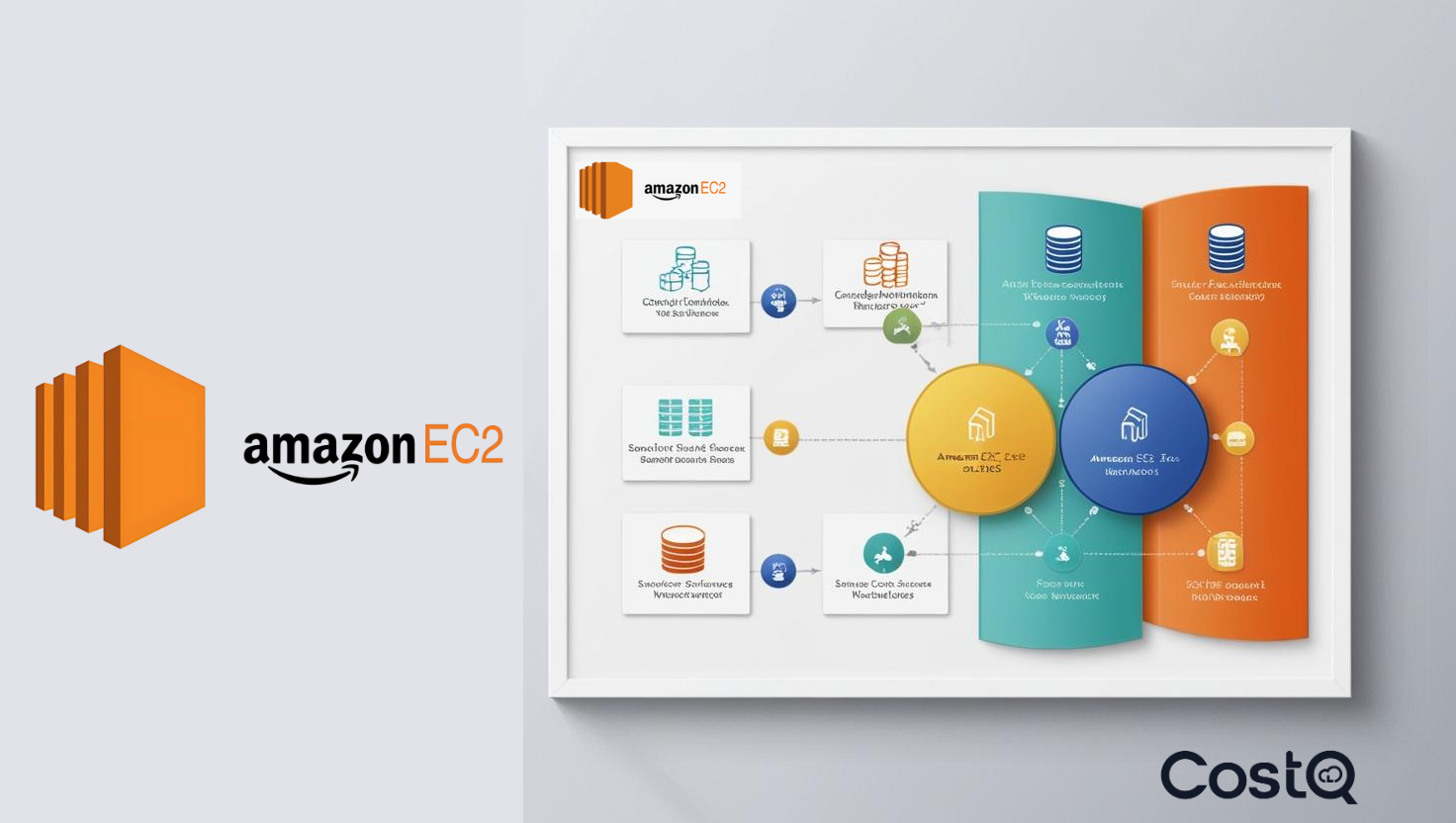
Contents
Amazon EC2, also referred to as Elastic Compute Cloud, is a type of service offered by Amazon Web Services AWS. It has computing power that is elastic and can be adjusted according to the user’s needs.
Users have the option to purchase virtual computers called instances and can execute them at any given point. This means that the users can expand their applications without physically having to invest resources into infrastructure which would usually involve expensive equipment and complex management. Because of this, computing becomes simpler, dependable, and cheaper.
Users have complete control of their environment with EC2 and they can customize the selected operating system, networking, storage, and storage unit, also known as an instance, to suit their workload needs.
It supports the functionality of cloud-centric applications that rely on the storage and hosting and processing resources that are dynamically allocated and made available from the Internet. EC2 is relied upon for robust web hosting, application development, big data management among other things.
Overview and Purpose
The key benefit that EC2 offers is its ability to adjust elasticity. Cloud-served virtual servers can be used by businesses and developers to execute their ideas and software. As demand fluctuates, these servers can be effortlessly adjusted, added or removed thereby ensuring that adequate resources are available.
The use of EC2 is to provide an organization with flexible and scalable compute resources without needing to purchase, maintain, or manage physical infrastructure. Users can launch or terminate instances within a couple of minutes, and integrate other AWS services. Resources can be scaled on demand too.
EC2 is commonly used for:
– Hosting websites or web applications
– Running A.I and machine training models
– Data analytics and processing model
– Development, testing and staging environment
– A suite of enterprise software and backend systems
Advantages of EC2
Having flexible and scalable configurations gives Amazon EC2 an edge over other providers. Alters the available compute resources to fit business needs. These steps are done while ensuring responsiveness even during peak traffic periods.
Compared to other cloud computing services, EC2 has several benefits:
Easier maintenance: Allows instances to run 24/7 while lowering administrative costs. Results in reduced operational complexity without the need for physical management resources.
Adjustments to your budget: Depending on business requirements, EC2 has flexible pricing models that include reserved, on-demand, and spot pricing.
High-caliber EC2 users: Different EC2 pricing strategies allow companies to effortlessly adopt cloud infrastructure.
Plentiful options: Combines all general nodes with a wide selection of variant types to improve functionality power per resource.
Control: Take full control over your windows EC2 instances, since you have full administrative privileges, that includes control over the OS, applications, and the networking as well down to every detail.
Integration: Users have access to other AWS services using EC2, such as Amazon RDS, Amazon S3, VPC, Lambda, and CloudWatch. This flexibility allows customers to design sophisticated, innovative applications that are reliable, safe, and scalable in the cloud.
EC2 Instances
In simple words, an EC2 instance is a virtual server that is hosted in the AWS Cloud. Each instance is hosted on a physical machine in an AWS data center, that is abstracted through virtualization technology. It supports multiple operating systems such as Linux, Windows, and even Mac OS and comes with varying levels of CPU, memory, storage, and network, that can be tailored to the needs.
At instance creation, users need to choose an Amazon Machine Image (AMI) that has the OS and any other required software, applications, or environment preconfigured to load in to support the user’s workload.
Instance Types
To meet diverse computing needs, Amazon EC2 has an exhaustive list of instances types, which are divided into specific groups called families. Each family is designed to provide the best results for specific workloads. This allows easy selection of the most affordable and effective resources for their applications.
General Purpose Instances:
(e.g, t4g, m7g) provide an adequate blend of computing, memory, and network resources. Besides, they are suitable for moderate performing demand applications development and small-scale databases like web servers. Their versatility helps them to be a go to for services from Startups, Testing Environments to light weight services.
Compute Optimized Instances:
(e.g, c7g, c6i) on the other hand focus on high level processing. Basically any task that is compute intensive which includes batch processing, web hosting, game hosting, scientific modeling along with video encoding, will be aided greatly from these powerful CPUs. Faster computation for any of the above tasks are ideal when these are employed.
Memory Optimized Instances:
As their name suggests, Memory Bound Applications have their share in memory constrained applications. With high memory to vCPUs ratio, Memory Optimized Instances(R7g, x2idn) prove to be ideal. These include in memory databases such as Redis or real-time big data analytics, workloads that need fast access to massive datasets kept in storage, or performance sensitive operations.
Storage Optimized instances:
Such as the i4i and im4gn, are tailored for high throughput, low-latency storage, as well as providing transactional I/O (input/output) performance. They are well-suited for large-scale data warehousing, NoSQL databases, distributed file systems, log analytics, and even high-speed log processing.
Accelerated Computing Instances:
Accelerated Computing Instances like p4d and inf2, specialize in meeting high computational needs by including hardware accelerators like GPUs, FPGAs, and AWS Inferentia chips. Such instances are used in activities like training machine learning models, running scientific simulations, and performing complex high-performance parallel computing (HPC) applications that are processor and accelerator intensive.
These solutions enable Amazon’s EC2 to grant developers and enterprises the flexibility to design infrastructure according to workload demand while controlling their performance expenses.
EC2 Instance Cycle
- Every Amazon EC2 instance is associated with five lifecycle states:
- Start: Quiesceness starts as soon as provisioned instances begin running and an AMI (abstrasct machine image) disk image gets mounted.
- Stop: Puts the instance on hold temporarily, as in “stopping/resting”. You are not billed for hourly usage when still paying for storage and after stopping, the EBS is resumed. It’s worth mentioning that when restarted, the same instance ID and data is retained.
- Reboot: Named recursion for giving instance ID remains unchanged. Allows for quick recoveries, data tweaking, and lossless updates.
- Terminate: This function is irreversible, so deleting an instance/temporarily removing associated ephemeral storage is the best step forward if looking for permanent change.
Choosing the Right Instance Type
Selecting EC2 instance types aligned to optimal needs is a must as workload requirements differ:
- General Purpose t4g & m7g – development web servers
- Compute Optimized c7g companions to analytics, gaming, or simulation applications on CPU intensive tasks.
- Memory Optimized r8g come alongside high performance analytics or in memory databases.
- Storage Optimized i4i – applications requiring swift and high-route storage big data and NoSQL friendly databases.
- Accelerated Computing are p4d counterparts for GPU driven activities such as machine learning and scientific computations.
Think about the most important aspects like performance requirements, budget, memory/storage needs, and how it fits within your application’s architecture. Additionally, AWS offers Compute Optimizer which recommends optimal instance types for users based on past usage data.
Pricing Models
Amazon offers Amazon EC2 with optimally tailored pricing options catering to different workloads and cost requirements. Choosing the best pricing model may have great consequences on your efficiency and costs on the cloud.
1. On-Demand Instances
As per the On-Demand Instances model, you can pay for compute capacity on either an hourly or per-second (depending on the instance type) basis without making long term commitments. Useful for applications with short term and irregular workloads, this model allows optimization of resources. This option most commonly is used in development testing spheres or for ad-hoc applications which are volatile and cannot be paused mid-way.
2. Reserved Instances (RIs)
With a commitment on use of a specific instance type in set region over a one or three year term, Reserved Instances offers a substantial discount (up to 72%) versus On-Demand pricing. There is three payment options, All Upfront, Partial Upfront, and No Upfront. For workloads like databases or production environments that are consistently in use and require constant performance, RIs are a better alternative.
3. Spot Instances
Spot Instances allow you to auction for idle EC2 capacity at a significant discount, sometimes reaching 90% lower than the On-Demand price. These discounts are useful for workloads such as big data analytics, image rendering, and other continuous integration tasks which are fault tolerant and have tolerance for interruptions. On the other hand, since AWS can terminate these instances with little prior notice, they are not suitable for critical applications or stateful applications unless you design for resilience.
4. Savings Plans
Similar to RIs, Savings plans offers discounts with a locked compute usage amount ($/hour) for 1 or 3 years. While plans provide more flexible pricing, it automatically applies to any EC2 instance regardless of region, size, OS, or tenancy which gives more flexibility to dynamic workloads.
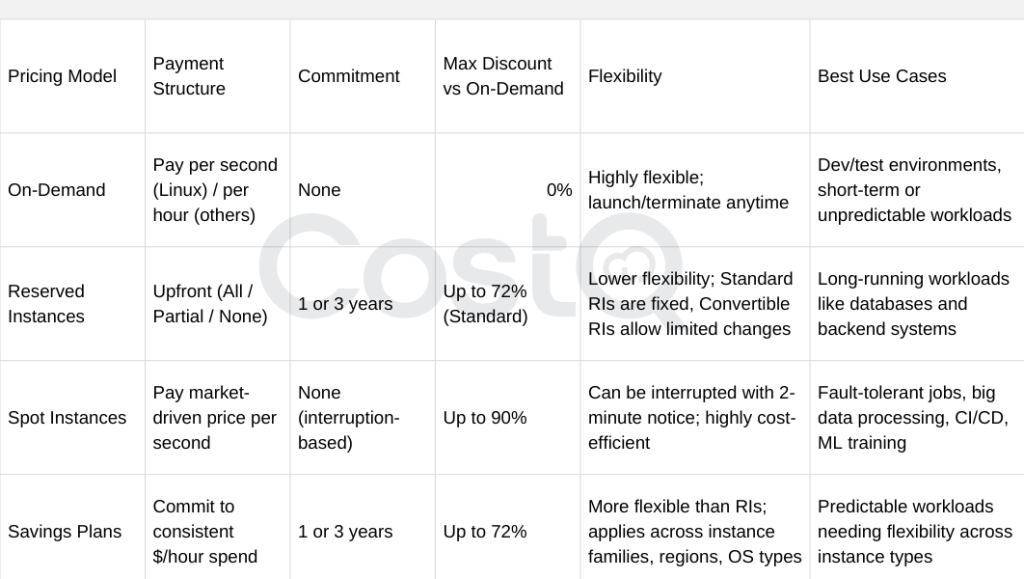
Key EC2 Features
Amazon EC2 has robust features to help with deployment, scaling, and secure operational control of applications.
1. Elastic IP Addresses
Elastic IPs allow the allocation and association of static public IPv4 addresses to EC2 instances. Further, they provide consistent endpoints even if your instance is stopped and restarted. This makes them especially useful when specific IPs for DNS records or whitelisted connections are required.
2. Auto Scaling
In response to traffic or demand, Auto Scaling adjusts the amount of operational EC2 instances. It guarantees the system is responsive and available while minimizing expenditures. You can set policies that will be acted upon automatically based on metrics, such as CPU utilization, or utilizing custom CloudWatch alarm thresholds.
3. Security Groups and Key Pairs
Security Groups function as a virtual firewall, monitoring the traffic for your instances from the internet and to the internet. You set constraints using rules such as the protocol type (TCP, UDP) And the range of ports as well as the border network (IP Address).
Key Pairs are used in the context of Security Features to restrict access. They work in the context of Linux to grant Remote Terminal (SSH) access whereas for Windows, they assist with Administrative password decryption. You manage the private key while the public key is kept on AWS.
4. Elastic Block Store (EBS)
EBS volumes can be created, modified and deleted independently while the EC2 instance is running. These volumes can be used for applications that require low latancy like databases and file systems. AWSworks stores the public key while users download unter encrypted memort the private key.
5. Amazon Machine Images (AMIs)
Images come with the Operating system and Software stack that is needed to run the instance, They provide pre-staging, so no need for advanced pre-configuration. Standardized deployment is completed by using customized AMI’s alongside official AWS ones.
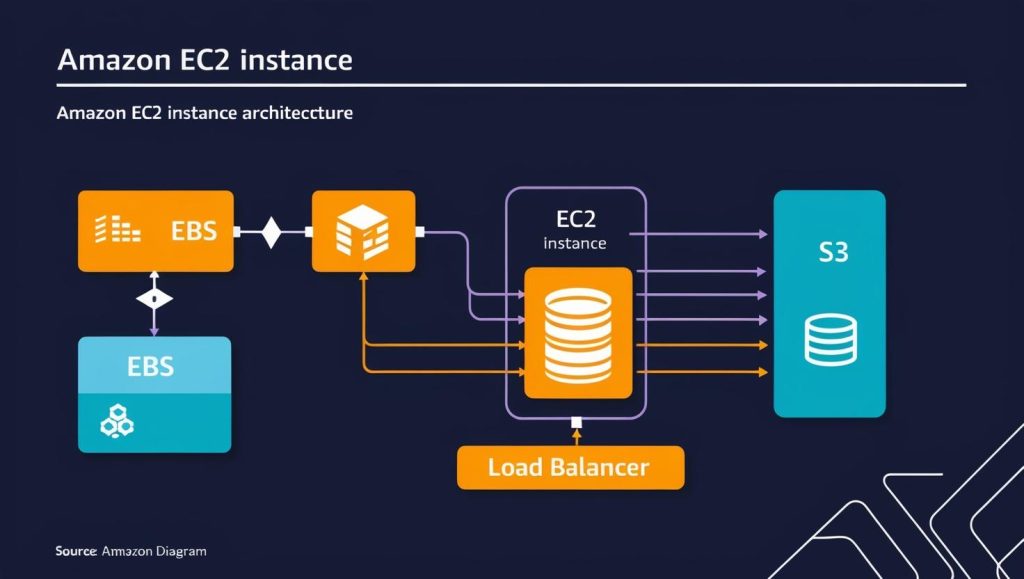
Launching and Managing EC2 Instances
1. Through AWS Management Console
The access AWS Management Console provides is very simple as compared to their software console. Users are able to initiate, start, and supervise functions of their EC2 services. Also, without writing a single line of code, users can set up EC2 instance types, storage, security groups, and resource monitoring levels. This option fits beginners best.
2. Services SDKs and AWS CLI
For users who prefer to automate, write scripts, or escalate their integration to other systems, AWS offers:
AWS CLI: A command line application which allows users to use terminal or script commands to operate other resources aside from EC2.W1
AWS SDKs: Provided in multiple languages, such as Boto3 for Python, JavaScript, or Java, these software development kits allow users to controll their EC2 instances programmatically which is beneficial when developing systems or operating infrastructure.
Instances Monitoring(Cloudwatch)
The dominant system of service monitoring for EC2 instances is Amazon CloudWatch. This program monitors these metrics and more:
– CPU usage
– Network Interface
– Interface disk
– Operating system specific event flag check.
Users are allowed to create CloudWatch Alarms that notify them on exceeding set metrics or take certain pre-configured steps like Auto Scaling. Using Custom Metrics and Logs, monitoring software can expose visibility of instance performance and health with added dashboards. While cloud watch permits basic monitoring, charged detailed monitoring is available at one minute intervals. per additional spent.
Security in EC2
In AWS EC2, security is a shared responsibility between AWS and the user where AWS is responsible for securing the infrastructure and the user is responsible for securing the applications, instances, and data.
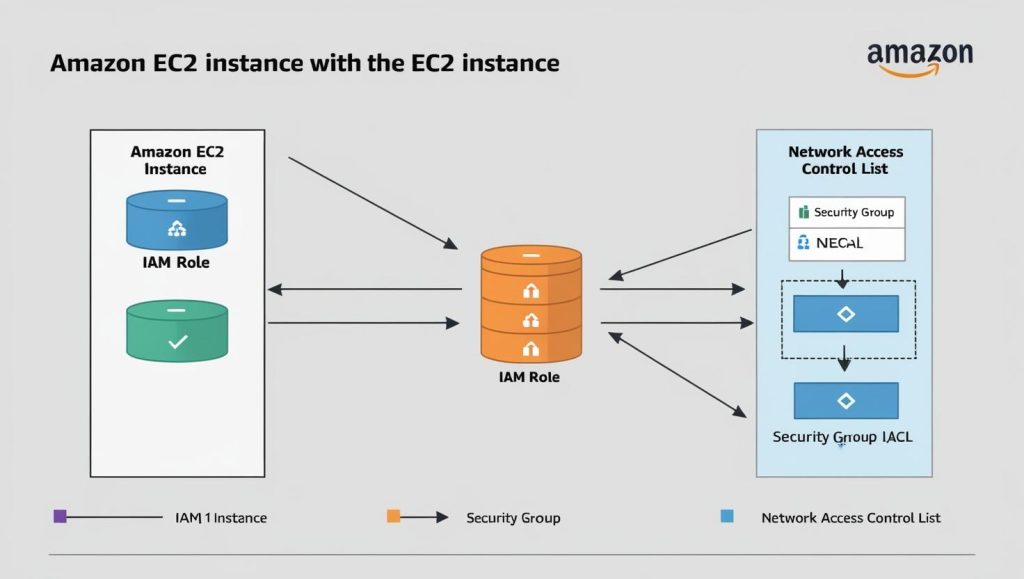
Best Practices for EC2 Security
Do not use Access Keys, Use IAM Roles Instead
- Applying an IAM role to an instance will allow the application on that instance to use its AWS services without requiring the long-term credentials containing its AWS service access keys. Avoid hardcoding credentials to access other AWS services.
- Practical Example: EC2 web app image upload to S3. An instance role is created with permission s3:PutObject and attached to the web server.
Restrict Network Access with Security Groups & NACLs
- Groups: Virtual firewalls mapped to instances that restrict the flow of incoming and outgoing traffic.
- Network Access Control Lists (NACLs): These sit on subnets and provide stateless access to the defined traffic.
- Best Practice: Open only the necessary ports, TCP 80/443 for web servers, and restrict access by IP range.
Encrypt EBS Volumes and Data in Transit
- SSL TLS should be enabled for application-level communication, and encryption should be enabled for EBS volumes.
- Practical Example: Healthcare applications using EC2 tend to encrypt EBS volumes to comply with HIPAA.
Make Use of Security Patch Updates
- Ensure that you keep your OS and applications upto date. For large fleets, make use of automation tools such as AWS Systems Manager Patch Manager.
Instance Metadata Protection
- In relation to SSRF attacks on EC2 metadata endpoints, IMDSv2 is the recommended approach.
Guard Duty and CloudTrail Should Be Enabled
- CloudTrail keeps track of Is API activity while Guard Duty keeps track of malicious activities such as port scanning, logging attempts, and so on.
EC2 IAM Roles.
- Purpose: Permssions that are scoped and temporary for EC2 communicating with other AWS services are issued.
- Example: An EC2 instance does some image processing, places the images on S3 and logs metadata on DynamoDB. Role enables access only for s3:PutObject and dynamodb:PutItem.
- Benefit: Increased security with no management of AWS access keys. Performed allows easier control of security posture.
Networking Access Based Control
Security Groups
- Apply rules for regulating incoming and outgoing network traffic: all response traffic is allowed if inbound traffic is permitted.
- Appropriate for specific access restriction at instance level.
NACLs (Network ACLs)
- These rules don’t operate at subnet level and are stateless.
- Great for restricting IP ranges or setting rules that impact a lot of resources.
Example: A financial services company manages workloads within a private subnet tied to strict NACL regulations permitting only internal IPs. Access from the outside is controlled through a public subnet using a bastion host.
Common EC2 Use Cases
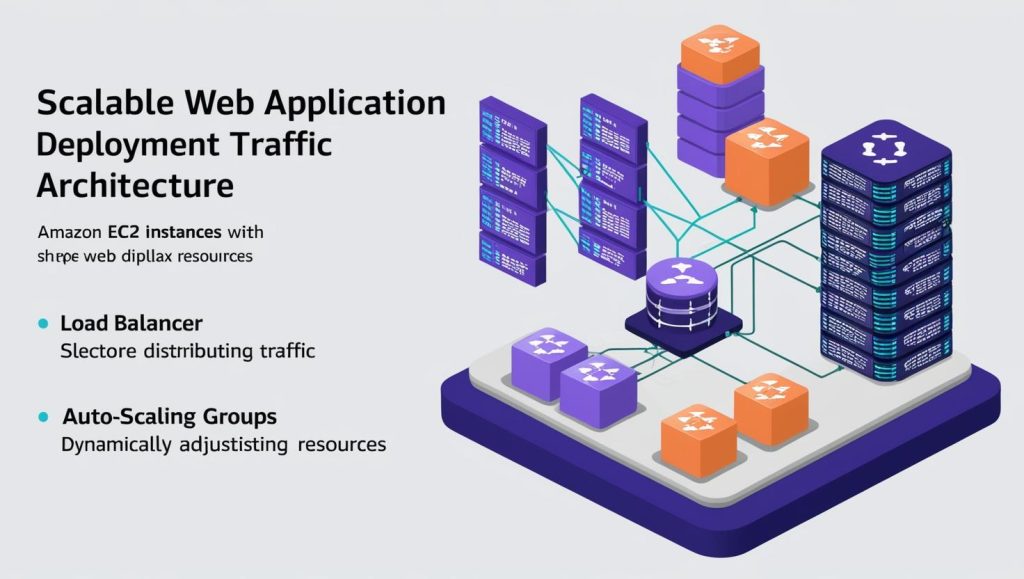
Hosting Web Applications
- Deploy EC2 instances behind load balancers for vertical scaling.
- Integrate EC2 with Auto Scaling Groups to effectively manage demand spikes.
- Example: Shopify merchants e-commerce sites host scalable frontends on EC2. They receive millions of requests daily.
Running Machine Learning Models
- Train models using GPU enabled instances such as p4d.
- Real Use Case: Startups utilizing EC2 Spot instances to train deep learning models to save costs.
Batch Processing
- Schedule jobs like log parsing and video rendering under AWS Batch and combine with EC2.
- Example: Media companies utilize EC2 Spot with EBS for processing large raw video batch files.
Dev/Test Environments
- Use CloudFormation or Terraform to deploy isolated environments.
- Turn them off during idle time to save costs.
- Example: SaaS companies provide preview environments for every pull request using CI/CD and deploy using EC2.
Interrelating with Other AWS Services
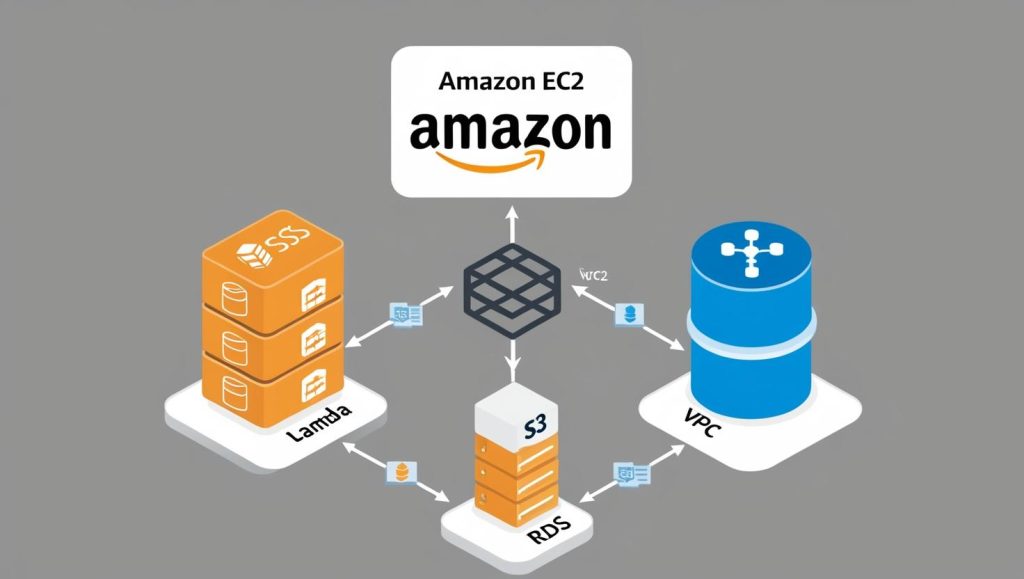
Amazon VPC (Virtual Private Cloud)
- EC2 runs inside a Virtual Private Cloud (VPC) which allows network isolation and custom IP ranges.
- Use private subnets for databases or internal APIs, and public subnets for web servers.
- Pair with NAT Gateways and Internet Gateways for controlled internet access.
Amazon S3 (Simple Storage Service)
- Keep user uploads, logs, and training data from EC2 instances in S3.
- EC2 can access S3 via IAM roles with no credentials needing to be exposed.
- Use Case: Data pipelines impact logs on EC2, compress them, and upload them to S3 for storage or further processing.
Amazon RDS (Relational Database Service)
- MySQL, PostgreSQL, and Oracle databases are commonly used with RDS. Applications running on EC2 often connect to RDS.
- To ensure security, keep RDS in private subnets and use security groups for access control.
AWS Lambda
- Trigger Lambda functions on other AWS services via EC2 events, such as post-upload data processing.
- Real Example: A photo processing app uses heavy lifting EC2 and posts-upload, metadata tagging is tackled by Lambda.
Real-World Example: Secure Web Application Stack
Frontend: A load balancer distributes traffic to an React app hosted on EC2
Backend: Node.js RESTful APIs hosted on EC2, RDS, S3 accessible for serverless S3 storage.
Security:
- Read and write permissions for S3 (IAM role for EC2).
- Security Group permits access to EC2 only via HTTP and HTTPS from Load Balancer.
- NACLs limited to non-standard ports on subnet level.
- All EBS volumes are encrypted.
- Monitoring via CloudWatch and GuardDuty.
Conclusion
The diverse offerings of EC2, like its various instance types and pricing implementations, can support almost any industry workload—be it hosting web applications, processing machine learning models, or handling batch jobs and development environments. In addition, Amazon EC2 serves as a powerful and flexible base for us to deploy cloud infrastructure that can easily scale, is secure, and is cost-effective.
You can achieve operational and compliance requirements by employing IAM roles, securing network access, and encrypting data EC2 offers seamless integration with a multitude of AWS services such as S3, RDS, VPC, and Lambda, allowing you to easily build modern and sophisticated applications.
From start-ups looking to easily launch their services to enterprises looking to optimize scale and resilience, Amazon EC2 has the right infrastructure. Adopting the right configurations can help ensure minimal cloud costs while maintaining application reliability, security, optimal performance, and a robust ecosystem.
These blogs might be helpful for you.
AWS Cost Optimization-Tips & Tools.
Exploring the Power of AWS Cloud In 21st Century: A Comprehensive Overview
Unlock the Potential of AWS Generative AI Bedrock: 7 Reasons It’s Transforming AI in 2025
Nirajan Pokharel
Cloud Expert
Expert in cloud infrastructure and cost optimization with over a decade of experience in helping companies reduce their cloud spending while maintaining performance.